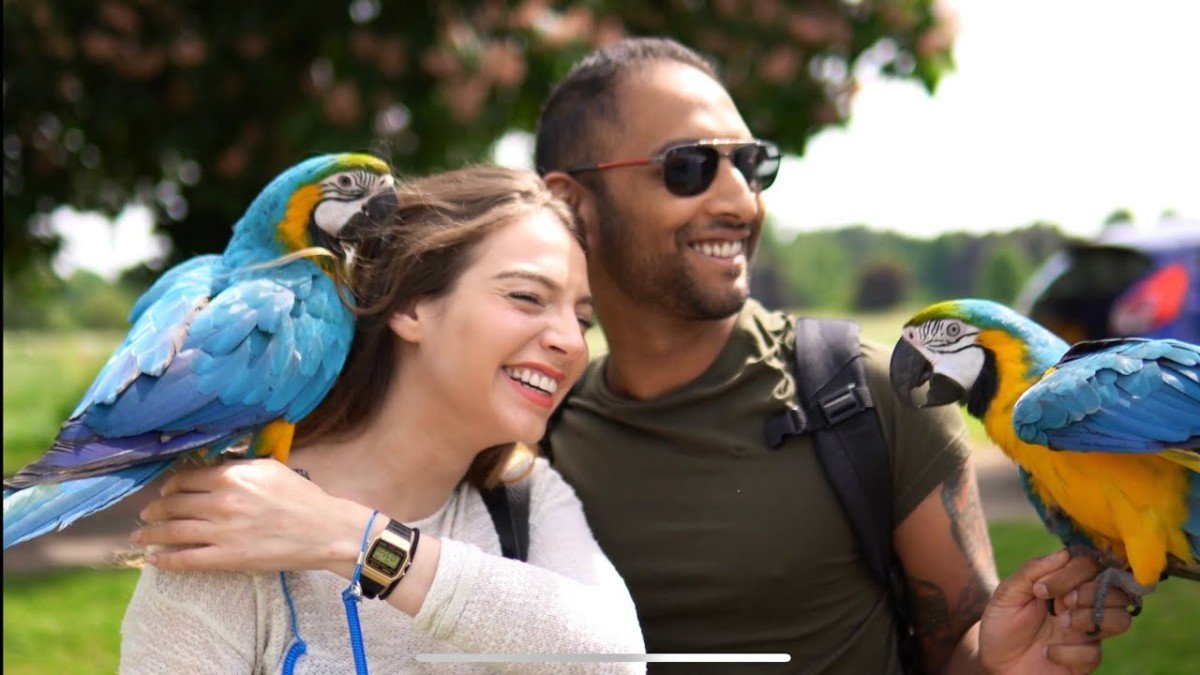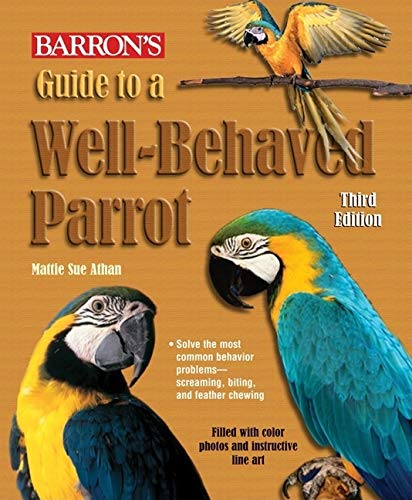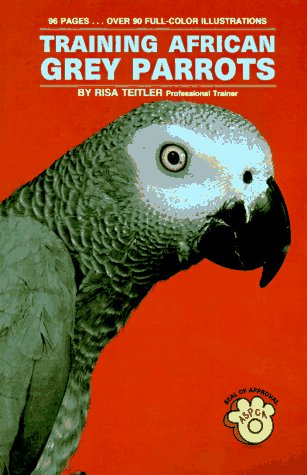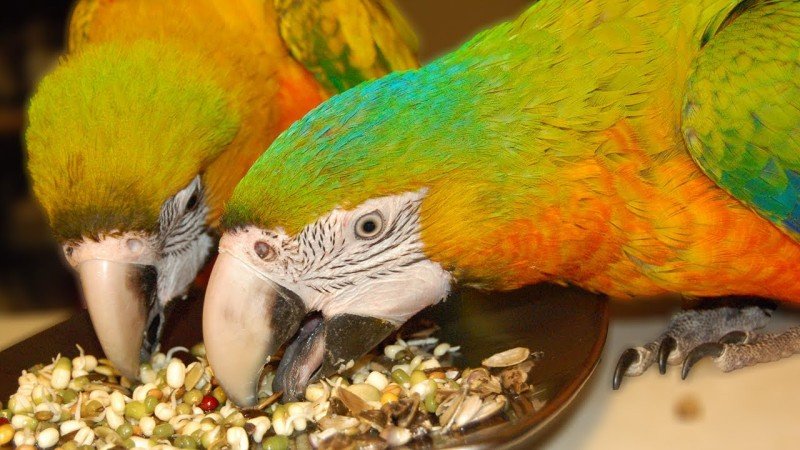Getting Started: Tips for Training Your Parrot
Training a parrot can be a very rewarding experience for both you and your feathered friend. However, it can also be a challenging and time-consuming process. Here are some tips to help you get started on your training journey:
1. Build a Relationship with Your Parrot
Before you start training, it's important to develop a strong bond with your parrot. Spend time with your bird every day, talking to it, playing with it, and offering it treats. Parrots are social creatures and enjoy being around their human companions. Once your parrot trusts you, it will be more willing to learn from you.
2. Start with Simple Commands
When you're ready to begin training, start with simple commands such as "step up" and "step down." Use a gentle voice and offer a treat as a reward when your parrot follows your command. Be patient and consistent in your training.
3. Keep Training Sessions Short
Parrots have short attention spans, so keep training sessions short (around 10-15 minutes). You can have multiple sessions throughout the day, but make sure to give your bird breaks in between. It's also important to end each session on a positive note.
4. Use Positive Reinforcement
Positive reinforcement is the most effective way to train a parrot. This means rewarding good behavior with treats, praise, and attention. Never punish your bird for bad behavior, as this can damage their trust in you and hinder the training process.
5. Be Consistent
Consistency is key when it comes to training a parrot. Use the same command words and gestures every time you train, and make sure everyone in the household is on the same page. This will prevent confusion and help your parrot learn more quickly.
By following these tips and being patient and consistent, you can successfully train your parrot. Remember to always treat your bird with kindness and respect, and enjoy the journey of watching your feathered friend learn and grow.
Building a Strong Bond Through Training
Training your parrot is not only beneficial for their mental and physical health, but it is also crucial for building a strong bond between you and your feathered friend. By spending quality time with your parrot, you enhance your relationship and establish trust. Here are some ways in which training can help build a strong bond with your parrot:
1. Positive Reinforcement
One of the key elements of parrot training is positive reinforcement. This means rewarding your parrot for exhibiting desirable behavior. For example, if your parrot performs a trick correctly, you can reward them with a treat or praise. This positive feedback helps in strengthening the bond between you and your parrot. They will begin to associate you with good things and will eagerly look forward to spending time with you.
2. Communication
Training your parrot also involves teaching them to understand and respond to various cues such as verbal commands, hand signals, and body language. This helps in improving communication between you and your parrot. As you work together, you will learn how to interpret each other's body language and develop a deeper understanding of your parrot's needs and desires.
3. Mutual Trust
By training your parrot, you establish mutual trust. Your parrot learns to trust you as a provider of good things, and you learn to trust your parrot to behave appropriately. As trust builds, your parrot will become more comfortable and confident around you, and you will feel more confident in your ability to handle them.
4. Bonding Activities
Training your parrot can also serve as a bonding activity. Spending time together, learning new things, and sharing experiences can help you and your parrot develop a deeper connection. Training can be an enjoyable and rewarding activity for both you and your parrot.
Conclusion
Training your parrot can be a fun and rewarding experience that can help build a strong bond with your feathered friend. By using positive reinforcement, improving communication, building mutual trust, and engaging in bonding activities, you can enhance your relationship with your parrot and create a lifelong bond.
Advanced Parrot Training Techniques for Enrichment and Discipline
Parrots are intelligent birds that thrive on mental stimulation and physical activity. To ensure that your parrot is happy and healthy, it is important to provide them with proper training techniques that not only focus on basic obedience but also on their mental and physical enrichment. Here are some advanced parrot training techniques for both enrichment and discipline.
Target Training
Target training is a technique that can be used to teach your parrot to touch a designated object with their beak or foot. This technique can help your bird learn to follow commands and use their brain to solve problems. First, choose an object that is easy for your parrot to touch, like a stick or a wooden spoon. Then, hold the object in front of your bird and say “touch” while holding it close to their beak. When your bird touches the object, reward them with a treat. Repeat this process until your bird is touching the object on command.
Flight Training
Flight training is an advanced technique that can help your parrot burn off energy and strengthen their muscles. Before you begin flight training, ensure that your bird's wings are fully grown and that you have a large, safe area for them to fly. To begin, hold your bird on your hand and gently toss them a short distance. As your bird becomes more comfortable, increase the distance of the toss and allow them to fly back to you. Remember to always praise and reward your bird for their efforts.
Clicker Training
Clicker training is a technique that uses a specific sound to mark the correct behavior. Clicker training can be used for a variety of training activities, including potty training, trick training, and recall training. To start clicker training, choose a clicker that your parrot can hear, and give them a treat immediately after clicking. Your parrot will begin to associate the sound with a reward, and you can use the clicker to mark the correct behavior during training exercises.
Discipline Training
It is important to train your parrot to avoid behaviors that may be harmful or dangerous. For example, biting, screaming, or chewing on electrical wires. To discipline your bird, it’s important to use positive reinforcement to encourage good behavior rather than punishment for bad. For instance, if your bird bites you, instead of scolding them, redirect their behavior by rewarding them when they behave correctly. This way, they will learn quickly and won’t repeat the unwanted behavior.
In conclusion, advanced parrot training techniques are essential for both enrichment and discipline of your bird. Use these techniques to keep your parrot healthy and happy, and build a strong relationship with your feathered companion.







